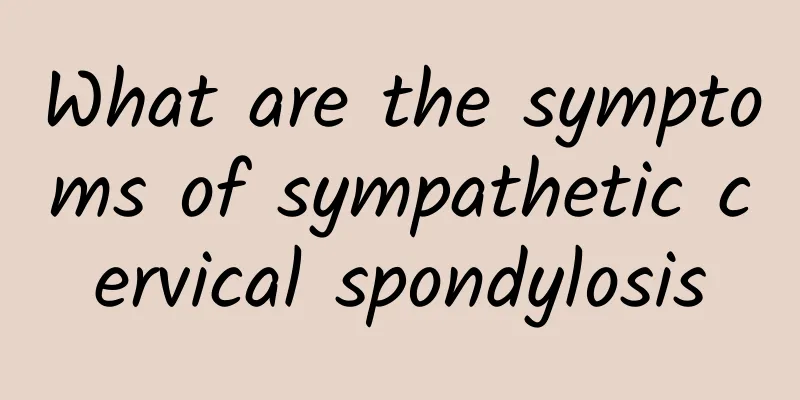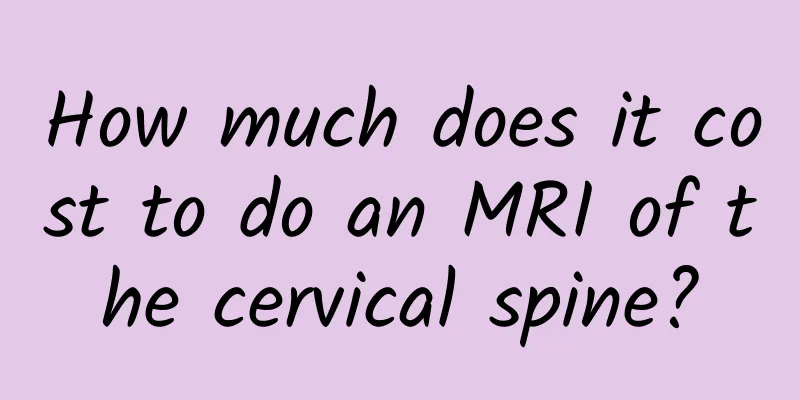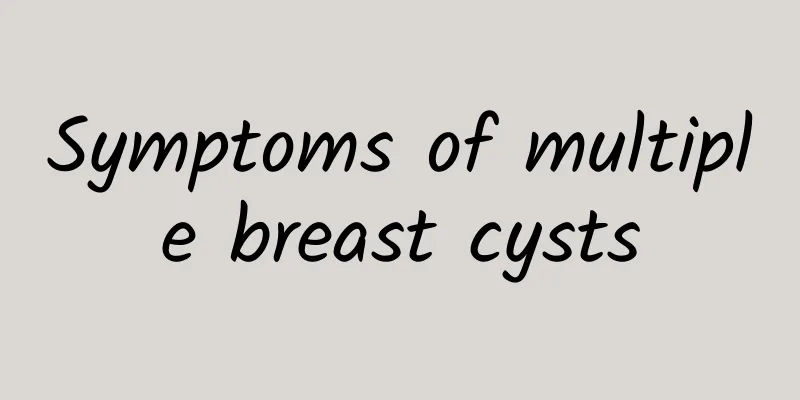What are the symptoms of sympathetic cervical spondylosis

|
Sympathetic cervical spondylosis is mainly manifested by symptoms such as dizziness, headache, tinnitus, palpitations, blurred vision, etc. These symptoms are mostly related to cervical vertebrae degeneration leading to stimulation or compression of the surrounding sympathetic nerves. It is necessary to seek medical attention in time and receive standardized treatment according to the specific symptoms. 1. Dizziness and headache Sympathetic cervical spondylosis is often accompanied by dizziness or headache, especially when the head is turned suddenly or kept in a bowed position for a long time. This is because cervical degeneration may stimulate the sympathetic ganglia, causing intracranial vasospasm or local cerebral blood supply insufficiency. suggestion: -For short-term relief, you can try applying heat to your neck to promote local blood circulation. -Perform cervical traction or massage, but it must be performed by professionals to prevent injury. -If dizziness persists for several days or recurs, you should seek medical attention promptly and undergo a CT or MRI scan to confirm the diagnosis. 2. Palpitation and chest tightness Some patients may experience palpitations, chest tightness, or even arrhythmia, which is closely related to the excessive excitement of the sympathetic nerves or cardiovascular dysfunction caused by cervical spondylosis, and can easily be mistaken for heart disease. suggestion: -After checking the heart function and ruling out other diseases, auxiliary medications can be used, such as B vitamins or glutamine that regulate autonomic nervous function. -Maintain a good work and rest schedule and reduce the intake of stimulating foods, such as strong tea and coffee, to avoid further triggering of sympathetic nerve excitement. 3. Tinnitus and hearing changes Sympathetic cervical spondylosis affects the blood supply to the inner ear, which can cause tinnitus, stuffy ears, and even mild hearing loss. Some patients also experience abnormal sensations around the ears, especially when in an improper posture. suggestion: -Maintain a correct sitting posture and avoid leaning your neck too far forward to reduce pressure on the nerves. -You can try neck physiotherapy, such as red light therapy or microwave therapy, to improve local microcirculation. -Long-term tinnitus requires timely joint diagnosis and treatment by the audiology department and orthopedics department. 4. Blurred vision and eye pain Sympathetic nerve disorders can cause insufficient blood supply to the eyes, which can cause blurred vision, dryness, or swelling. These symptoms are often aggravated by prolonged computer use or poor sitting posture. suggestion: - Take regular breaks when working or studying. Move your shoulders and neck every 30 minutes and look into the distance to relieve eye fatigue. -Your doctor may recommend ultraviolet B therapy to relieve changes in eye pressure caused by excessive sympathetic tone. 5. Sleep disorders Excessive excitement of the sympathetic nerves may interfere with the normal activity of the autonomic nervous system. Such patients often feel that their sleep is not deep, they wake up easily, and they may even experience fatigue and mood swings. suggestion: -Adjust the sleeping environment, such as using a healthy pillow that properly supports the head to avoid repeated compression of the nerve roots by the cervical spine. -If necessary, you can use Chinese medicine to regulate sleep. Common prescriptions include Tianwang Buxin Dan, etc., but you must take it according to the doctor's advice. Symptoms of sympathetic cervical spondylosis are complex and varied. If you feel obvious discomfort or multiple symptoms recur, you should go to the hospital as soon as possible to complete cervical spine imaging examinations and choose comprehensive treatment methods such as medication, physical therapy, and rehabilitation exercises. At the same time, you should pay attention to maintaining a good posture in daily life and strengthen neck health care to avoid further aggravation of symptoms. |
<<: How to treat cerebral vasospasm in a ten-year-old child
Recommend
What does a breast cyst look like?
Breast cysts usually appear as soft, smooth, roun...
Breast cysts secret recipe
There is no scientific evidence that folk remedie...
Can I eat kelp if I have breast cyst?
Patients with breast cysts can eat kelp in modera...
Breast cysts are classified into several categories
Breast cysts are mainly classified according to t...
What causes gallstones in women?
The formation of gallstones in women is mostly du...
Which department should I go to for examination of esophageal hemangioma?
Esophageal hemangioma should be examined by the g...
Which department should I go to if I have breast cysts?
If you have breast cysts, you need to go to the h...
Are anal warts a sexual disease?
Anal warts are a common sexually transmitted dise...
Can perianal abscess be treated without surgery?
Perianal abscess is a disease that needs to be ac...
How much does it cost to remove stitches?
The cost of stitch removal is a concern for many ...
How to treat perianal abscess
Perianal abscess is a disease that requires promp...
The best way to treat cholecystitis
The best ways to treat cholecystitis include medi...
Recurrent perianal abscess
Recurrence of perianal abscess refers to the reap...
Symptoms of non-lactation mastitis recovery
The recovery symptoms of non-lactation mastitis u...
How can women recover quickly from urethritis?
Female urethritis can be cured faster through com...









